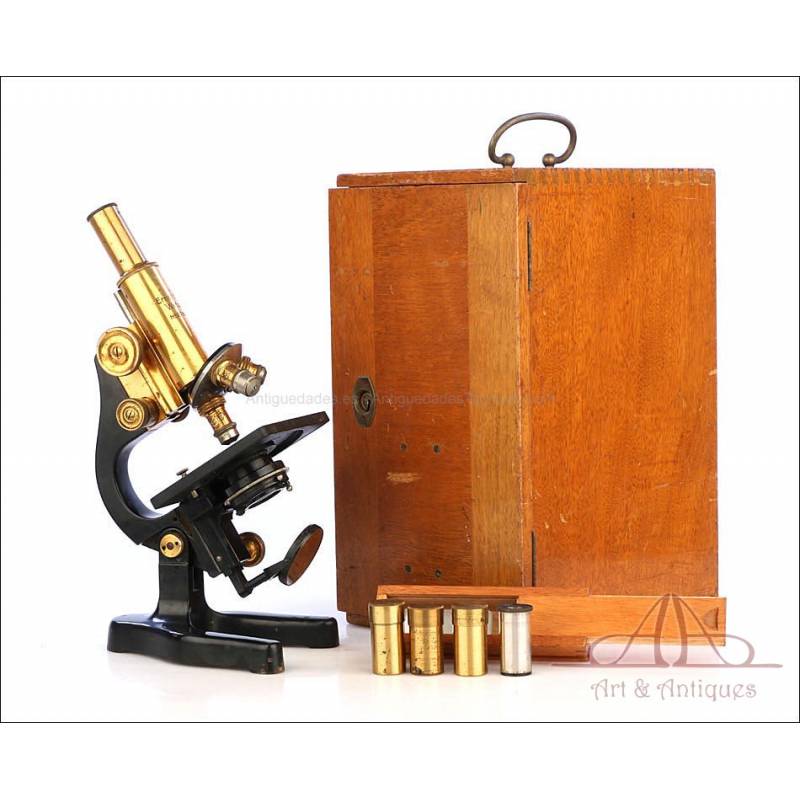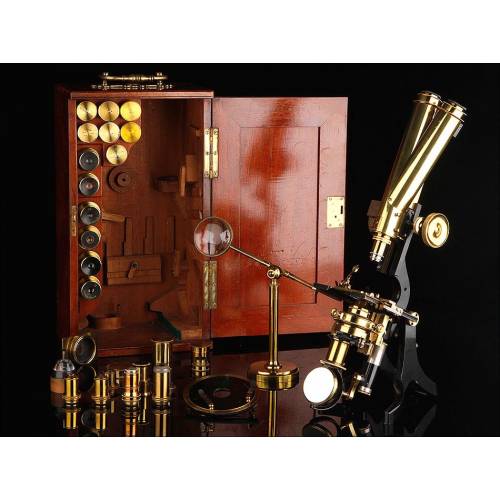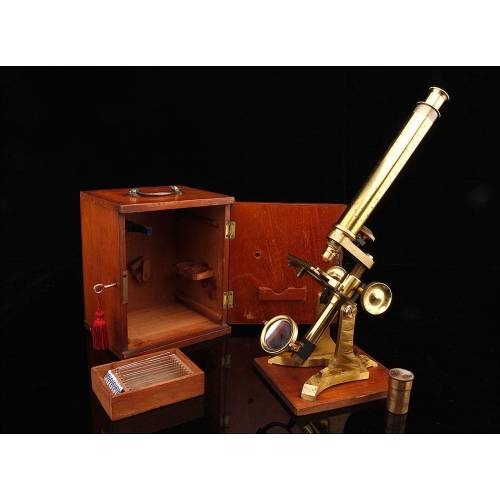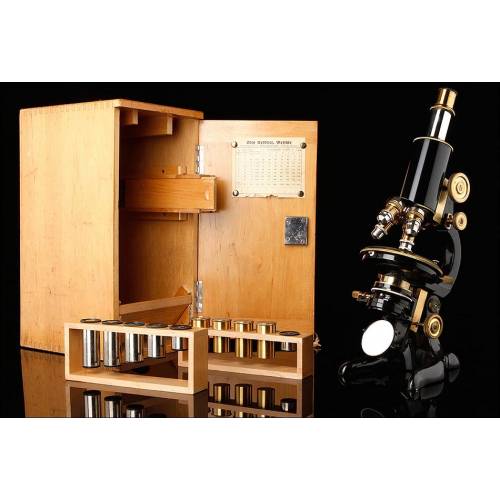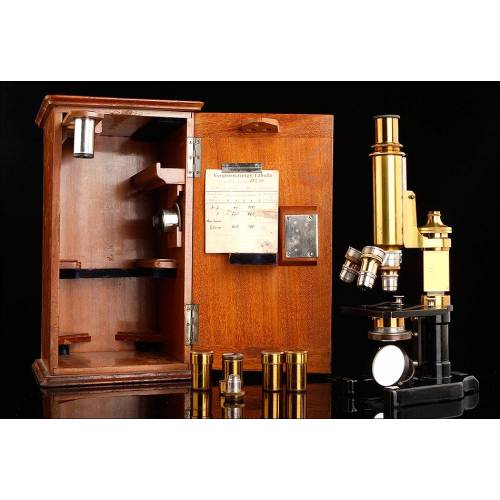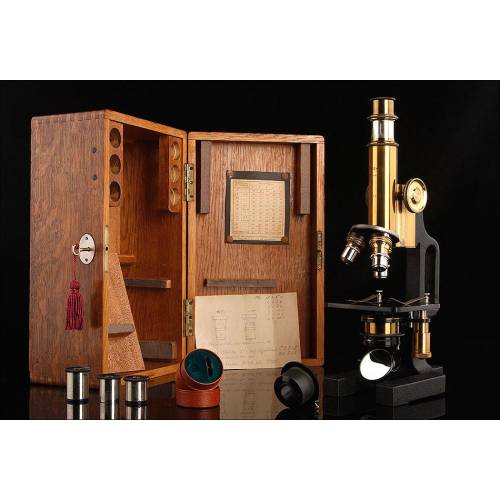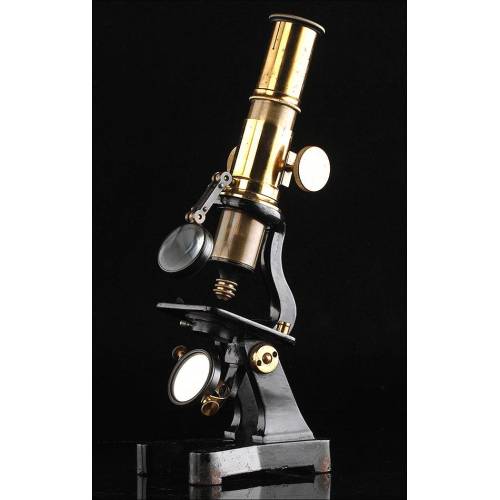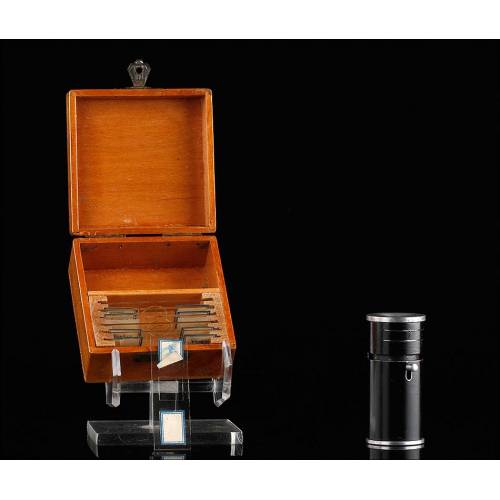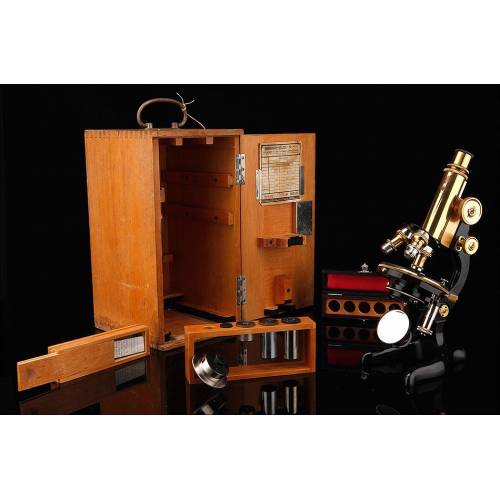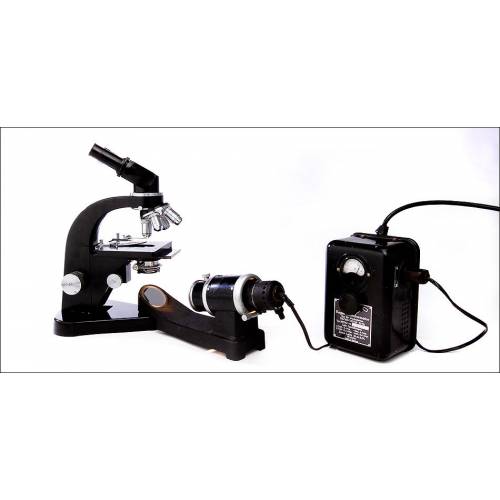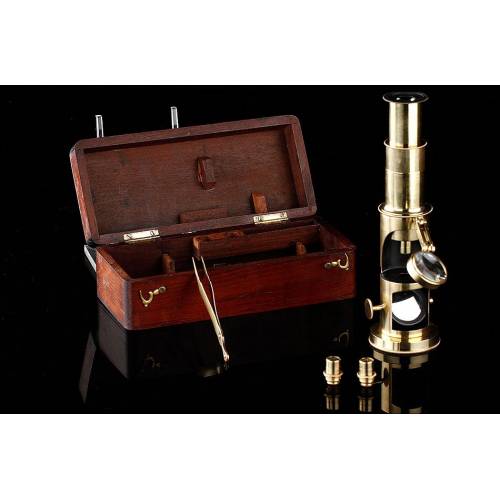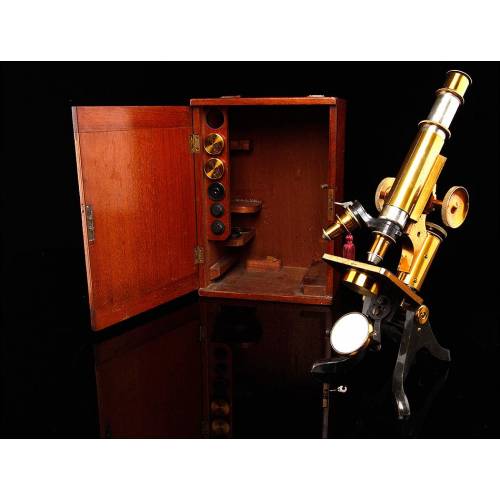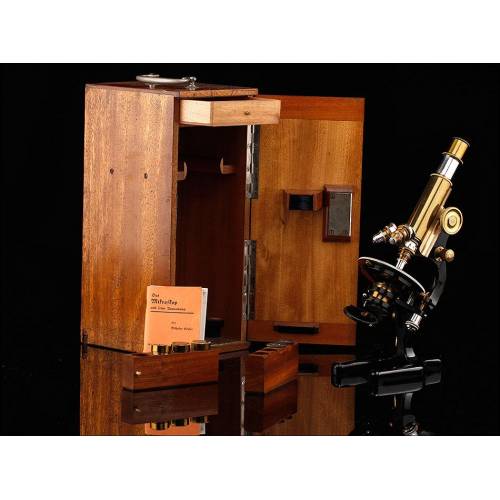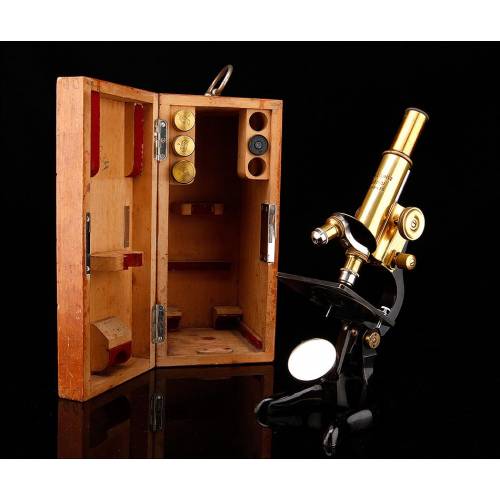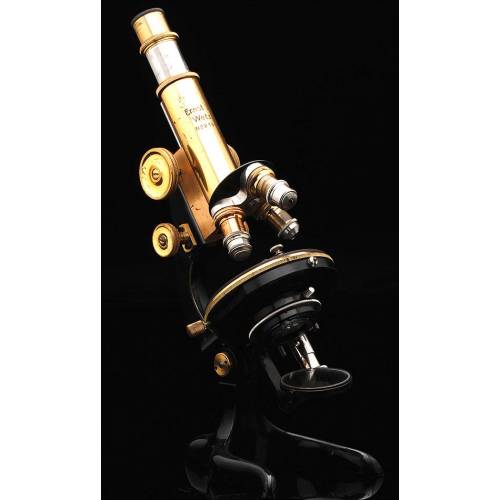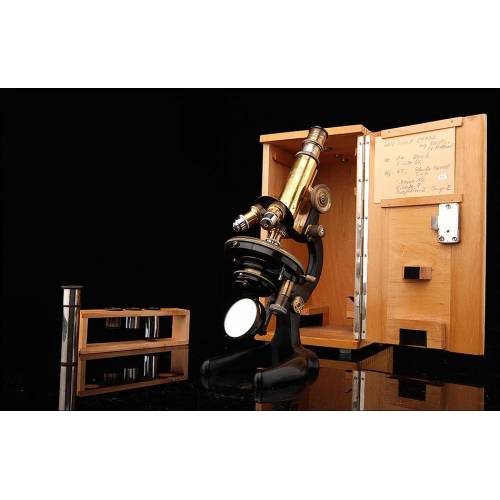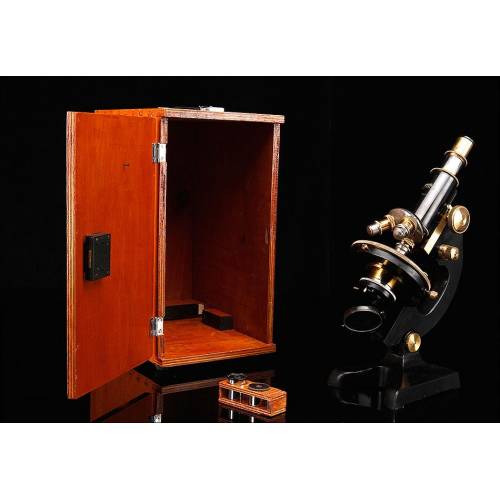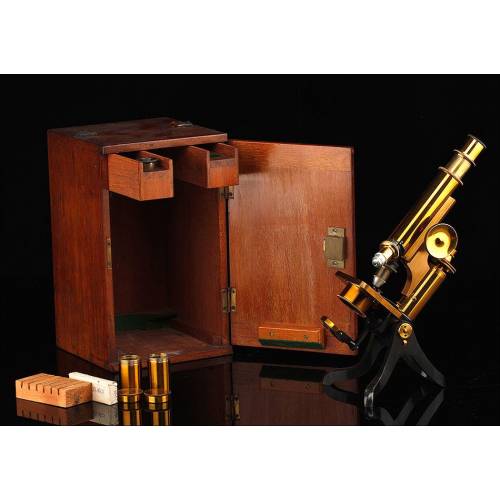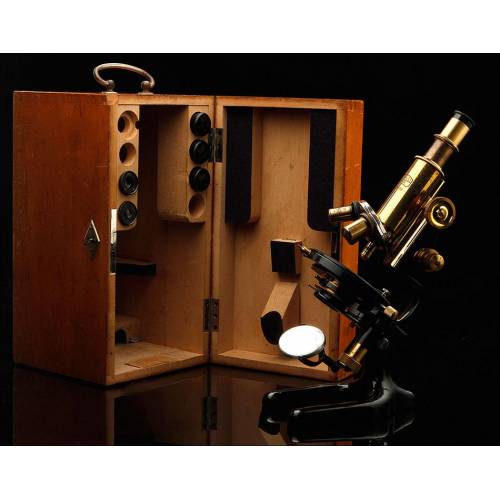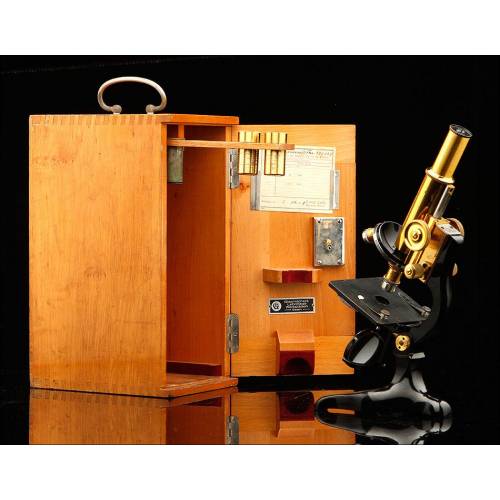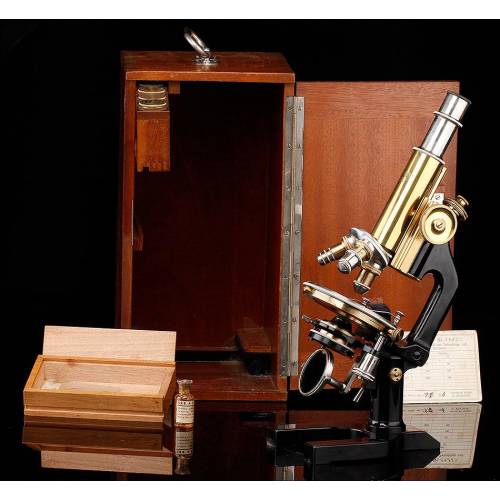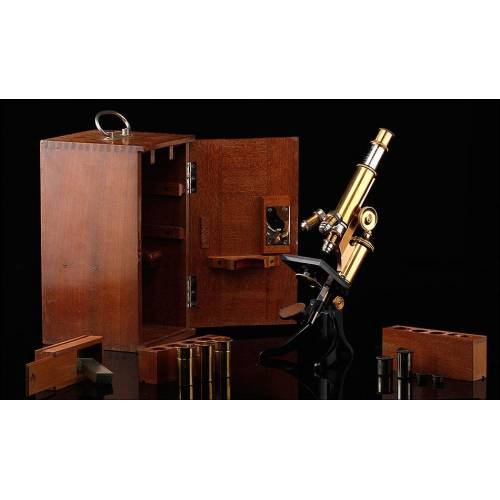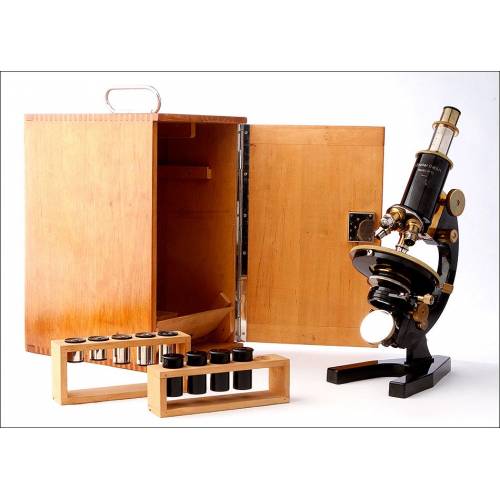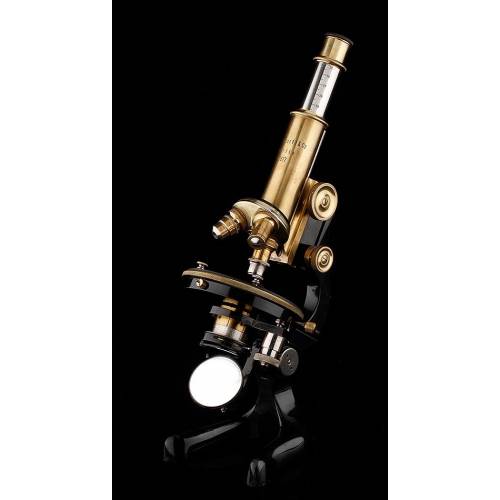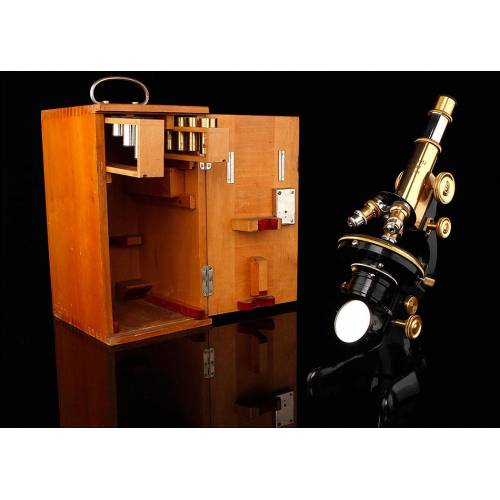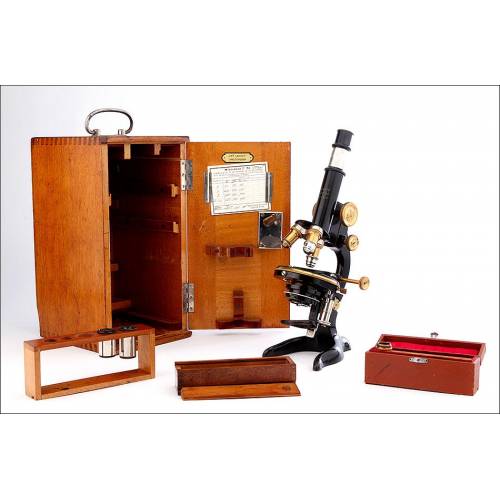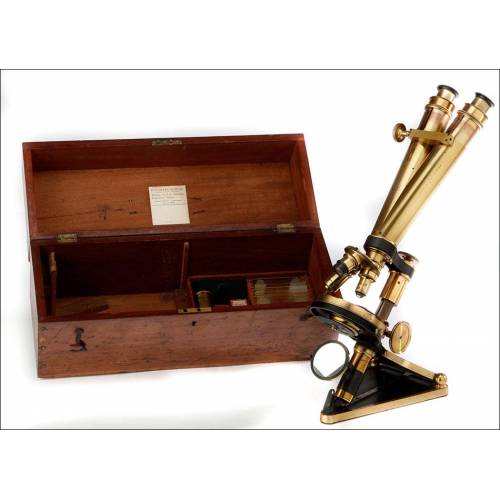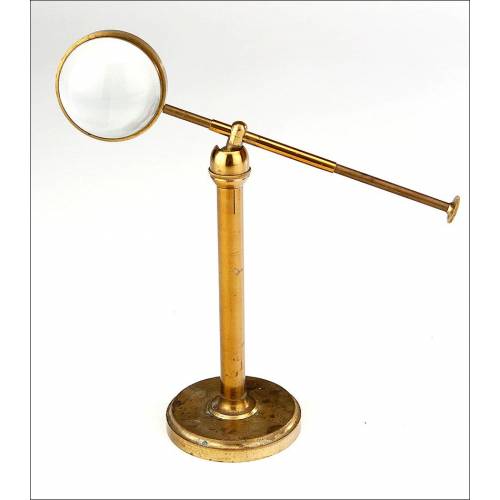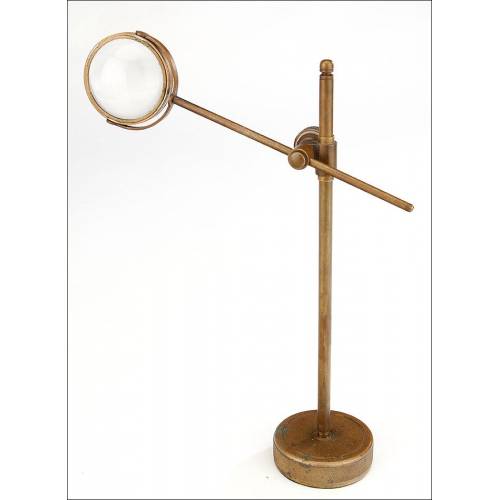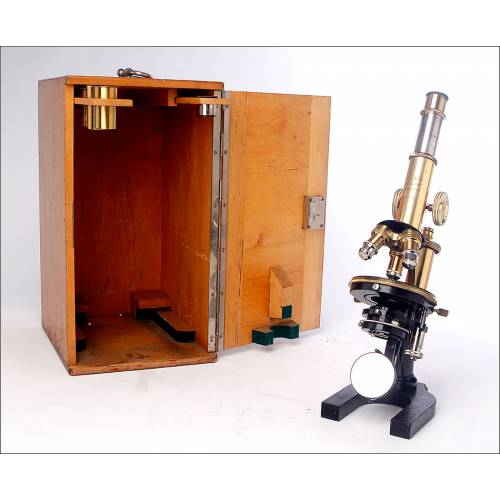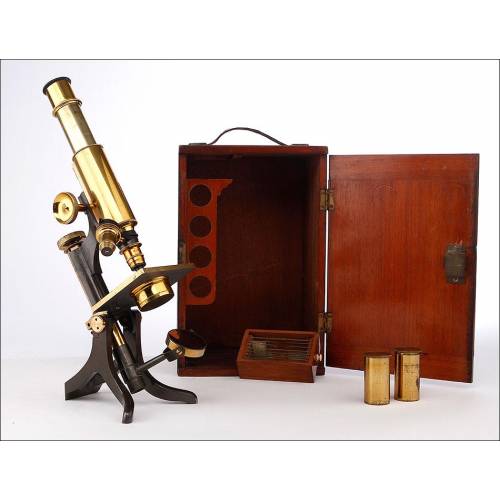D-834
Antique Leitz Wetzlar Microscope. Germany, 1929
Fine-looking antique Leitz Wetzlar microscope in good condition. With wooden storing case and set of objectives and eyepieces.
Sold!
Gorgeous antique Ernst Leitz Wetzlar microscope, made in Germany in 1929 and in fine condition and good working order. This microscope comes in its light-colored mahogany storing case, also finely preserved. It is accompanied by a set of 3 objectives and 2 eyepieces, all of them functional. This instrument has a fine black-lacquered horseshoe foot with a lovely and classic design. The microscope mounts a three-lens revolving nosepiece, functional shutter and double-sided mirror, original from the time and in excellent condition. The rack-and-pinion system which makes it possible to move the turret is greatly preserved and moves fluidly. The turret bears the manufacturers name and the microscopes serial number engraved at the front side: Ernst Leitz Wetzlar Nº 276679. This number indicates that it was made exactly in the year 1929. At the back of the instrument we can see the companys logo too. The brass component parts preserve the original protecting lacquer, a finish which provides them with a fine antique patina. The storing case is well preserved too; the lock is functional, but the key is missing. This amazing antique Ernst Leitz Wetzlar microscope will shine on a fine table, a shelf or a showcase with old-time scientific instruments. Dimensions: Width: 4.72 in / 12 cm. Height: 13.39 in / 34 cm. Depth: 7.1 in / 18 cm. Ernst Leitz Wetzlar History The beginnings of the famous optic material manufacturing company named Ernst Leitz Wetzlar can be found in the first half of the 19th century, when the mechanic and selft-taught mathematician Carl Kellner founded the Carl Kellner Optisches Institut in Wetlzar, Germany. After his early death his widow maintained the business, and in 1864 the mechanical engineer Ernst Leitz entered the company. Just five years later, Leitz took control of the firm and changed its name for Ernst Leitz Wetzlar. Leitz led the company to success after introducing improvements such as serial production, raising sales volume rapidly after 1871. Leitz microscopes included technical improvements that increased their quality; by the late 19th century the company already had a worldwide reputation. Ernst Leitz died in 1920 and the leadership of the firm passed to his son. As well as for their microscopes and optic material, Leitz became hugely famous for their famous Leica cameras (abbreviation of Leitz Camera).

